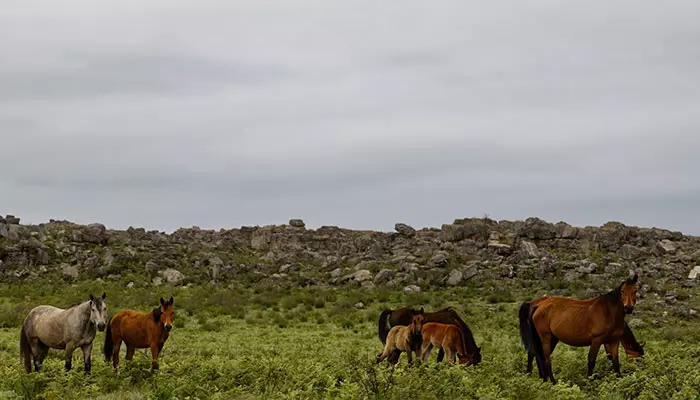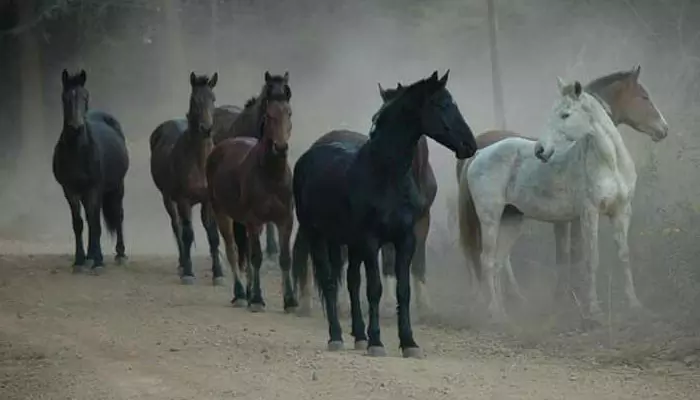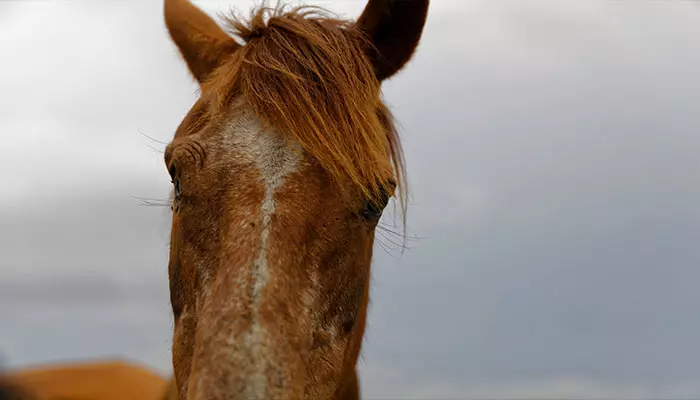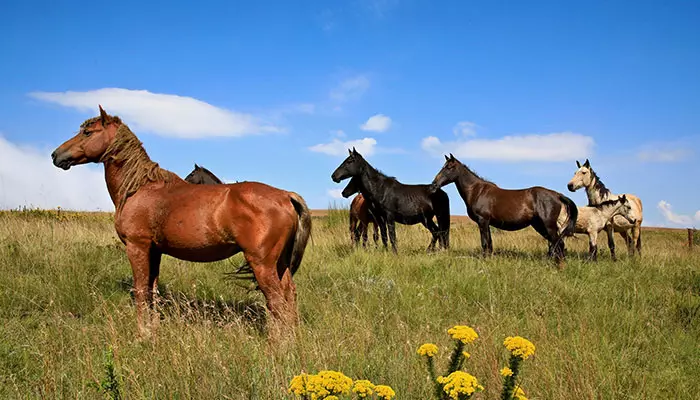Wild Horses of Mzansi: Discovering the Untamed Beauty of South Africa
This August, join us at Springbok Casino as we embark on an adventure to uncover the untamed beauty of South Africa's wild horses. From the rugged terrains of Kaapsehoop to the coastal plains, these majestic creatures roam free, embodying the spirit of freedom and resilience. Dive into captivating stories, breathtaking photography, and fascinating facts about these incredible animals. Get ready for a month of wild discoveries and thrilling content dedicated to the magnificent wild horses of Mzansi.
The Mystique of the Wild Horses of Kaapsehoop
Nestled in the scenic hills of Mpumalanga lies the charming village of Kaapsehoop, home to one of South Africa’s most enchanting secrets—the wild horses of Kaapsehoop. These magnificent creatures have roamed the area for generations, capturing the hearts and imaginations of all who encounter them.
The origins of these wild horses are shrouded in mystery. Some say they are descendants of horses that escaped from British troops during the South African War, while others believe they were left behind by gold prospectors in the late 1800s. Regardless of their beginnings, these horses have adapted to the harsh conditions of the highveld, developing unique traits that enable them to survive.
Roaming freely across the rolling hills and open grasslands, the wild horses of Kaapsehoop have become a symbol of resilience and freedom. Their presence adds a magical touch to the already stunning landscape, making Kaapsehoop a must-visit destination for nature lovers and adventure seekers alike.
Quiz Fact: The wild horses of Kaapsehoop are believed to be descendants of horses that escaped from British troops during the South African War or were left behind by gold prospectors.
Surviving the Wild: Adaptations of South Africa's Feral Horses
The wild horses of South Africa have developed remarkable adaptations to survive in their varied and often harsh environments. These adaptations not only highlight their resilience but also their incredible ability to thrive without human intervention.

In Kaapsehoop, the wild horses have adapted to the highveld's fluctuating temperatures and limited water sources. Their thick coats protect them from the cold, while their strong, hardy hooves enable them to traverse rocky terrain. These horses are also highly social, forming close-knit herds that provide protection and support.
On the other hand, the feral horses of the Namib Desert, although not in South Africa, provide a fascinating comparison. They have adapted to extreme heat and scarce water supplies, showcasing the incredible versatility of wild horse populations across southern Africa.
Quiz Fact: The wild horses of Kaapsehoop have thick coats to protect them from the cold and strong, hardy hooves for rocky terrain.
The Role of Wild Horses in South Africa’s Ecosystem
Wild horses play a unique and often overlooked role in South Africa’s ecosystems. Their presence can have both positive and negative impacts, depending on how their populations are managed and the specific environments they inhabit.
These horses contribute to the ecosystem by grazing on grasses and other vegetation, which can help maintain the balance of plant life and prevent overgrowth. This grazing also promotes new growth, which can benefit other wildlife species. Additionally, their hooves help aerate the soil, aiding in seed dispersal and improving soil health.
However, without proper management, wild horse populations can become too large, leading to overgrazing and soil erosion. Conservation efforts must strike a balance between preserving these majestic animals and protecting the natural environment.
Quiz Fact: Wild horses help maintain the balance of plant life by grazing, which promotes new growth and benefits other wildlife species.
Wild Horses and Human Interaction: A Delicate Balance
The relationship between wild horses and local communities in South Africa is complex and multifaceted. While these animals are cherished by many for their beauty and the sense of freedom they represent, they can also pose challenges to human activities and land management.
In areas like Kaapsehoop, wild horses attract tourists, boosting local economies and raising awareness about wildlife conservation. However, they can also compete with livestock for grazing land and water resources, leading to conflicts with farmers.
Effective management strategies are essential to ensure that wild horse populations are kept in balance with human needs. This includes measures such as population monitoring, habitat protection, and community engagement to foster coexistence and mutual benefits.
Quiz Fact: Wild horses in areas like Kaapsehoop attract tourists and boost local economies but can also compete with livestock for grazing land.
Conservation Efforts: Protecting South Africa's Wild Horses
Conservation efforts to protect South Africa's wild horses are crucial to ensure their survival and the health of the ecosystems they inhabit. Various organizations and local communities are involved in initiatives aimed at preserving these magnificent animals.
One such organization is the Kaapsehoop Horse Trails, which not only offers guided tours to see the wild horses but also actively participates in their conservation. They work to maintain the balance between tourism and
wildlife protection, ensuring that the horses can roam freely while minimizing human impact.
Efforts also include population monitoring, habitat restoration, and community education programs. These initiatives help raise awareness about the importance of wild horses and promote sustainable practices that benefit both the animals and local communities.
Quiz Fact: Conservation efforts for South Africa's wild horses include population monitoring, habitat restoration, and community education programs.
Legends and Lore: Myths Surrounding South Africa’s Wild Horses
The wild horses of South Africa are not just fascinating animals; they are also the subjects of numerous legends and myths. These stories add to the mystique of the horses and highlight their cultural significance.

One popular legend from Kaapsehoop tells of a ghostly herd that appears on misty mornings, believed to be the spirits of horses that died in the area. Another tale speaks of a lone stallion that leads the herd, a symbol of strength and leadership.
These myths and legends reflect the deep connection between the wild horses and the communities that live alongside them. They serve as reminders of the horses' enduring presence and the mystery that surrounds their existence.
Quiz Fact: One popular legend from Kaapsehoop tells of a ghostly herd of wild horses that appears on misty mornings.
Photographing the Untamed: A Guide to Capturing Wild Horses
Photographing wild horses in South Africa is a thrilling and rewarding experience, offering unique challenges and opportunities for capturing their beauty and spirit. Here are some tips for aspiring wildlife photographers.

Firstly, patience is key. Wild horses are unpredictable and can be difficult to approach. Observing from a distance and waiting for the right moment is essential. Using a telephoto lens allows photographers to capture detailed shots without disturbing the animals.
Understanding the behavior of wild horses can also enhance the photographic experience. Knowing when they are most active, their social dynamics, and typical habitats can help in planning the perfect shot. Early mornings and late afternoons often provide the best lighting and opportunities for action shots.
Quiz Fact: Using a telephoto lens is essential for capturing detailed shots of wild horses without disturbing them
The Unique Behaviors of South Africa's Wild Horses
Wild horses in South Africa exhibit fascinating behaviors that reflect their adaptation to the wild and their social structures. Understanding these behaviors provides insight into their lives and the challenges they face.

Wild horses are highly social animals, forming herds that are usually led by a dominant stallion. These herds have complex social hierarchies, with each member playing a specific role. Mares often form strong bonds with each other and their foals, providing protection and support.
In their natural habitats, wild horses engage in various activities such as grazing, grooming, and playing. These behaviors not only help them survive but also strengthen social bonds within the herd. Observing these behaviors offers a glimpse into the intricate lives of these majestic animals.
Quiz Fact: Wild horse herds are usually led by a dominant stallion, and mares form strong bonds with each other and their foals.
Wild Horses vs. Domestic Horses: Key Differences
While wild horses and domestic horses share many similarities, there are key differences that set them apart. Understanding these differences sheds light on the unique adaptations of wild horses and their way of life.
Wild horses are generally more robust and have adapted to survive without human care. They have stronger hooves, thicker coats, and greater stamina to endure harsh conditions. Their diet consists of natural vegetation, and they must constantly search for food and water.
In contrast, domestic horses are bred for specific traits and often receive regular care, including feeding, grooming, and medical attention. They may not have the same level of resilience as wild horses but are often more trainable and suited for various human activities.
Quiz Fact: Wild horses have stronger hooves, thicker coats, and greater stamina compared to domestic horses due to their adaptation to survive in the wild.
Wild Horses in Popular Culture and Media
Wild horses have captured the imagination of people worldwide and have been featured in various forms of popular culture and media. Their depiction often highlights themes of freedom, beauty, and resilience.
In South Africa, wild horses have inspired numerous artworks, literature, and films. They are often portrayed as symbols of untamed beauty and the spirit of adventure. Documentaries and nature programs frequently showcase their lives, raising awareness about their conservation.
These portrayals contribute to the mystique of wild horses and reinforce their cultural significance. They remind us of the importance of preserving these majestic animals and the natural environments they inhabit.
Quiz Fact: Wild horses are often portrayed in popular culture as symbols of freedom, beauty, and resilience, inspiring numerous artworks, literature, and films.



